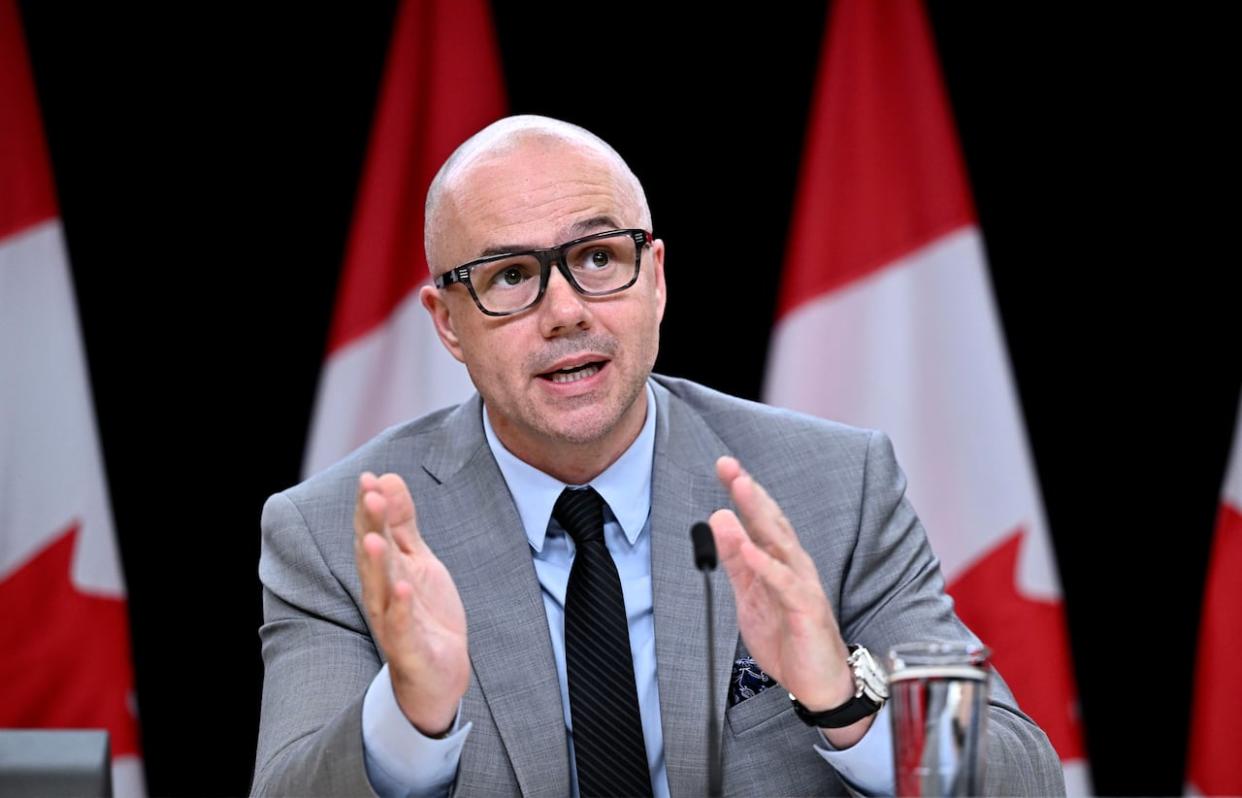Phoenix replacement still years from full implementation, government says

A payroll system for federal workers intended to replace the much-maligned Phoenix platform is still years away from being fully implemented, according to a senior government official.
Since its introduction eight years ago, Phoenix has caused problems for thousands of federal employees, many of whom have been overpaid, underpaid or not paid at all.
At a new conference on Tuesday, Alex Benay, associate deputy minister of Public Services and Procurement, said testing began on Phoenix's replacement, Dayforce, in 2022.
"This is the year that we are building Dayforce as a replacement system for HR and pay and determining if it is a feasible solution for the Government of Canada," Benay said.
Benay said the switch won't happen overnight, however, and cautioned it may take years until the new system is fully implemented. In the meantime, Phoenix will remain in use.
"In order to do this well and steadily, there will be a world where we continue to see an IBM Phoenix contract and a Dayforce contract for the foreseeable future in order to make sure that we don't replicate the mistakes that we did in 2017," he said.
Rising costs
When launched in 2016, Phoenix initially cost taxpayers about $300 million. The cost has now ballooned to $3.5 billion.
The federal government expects to spend an additional $936 million over the 2024-2025 fiscal year. Benay said half of that will be allocated to Phoenix while the other half will go toward the transformation to a new system.
Much of the Phoenix costs are directed at managing and reducing a serious backlog of transactions waiting to be processed.
According to the Public Service Pay Centre dashboard, 416,000 transactions were waiting to be processed on June 19.
Benay said the goal is to process them all by March 2025. To achieve that goal, he said 200 compensation advisers have been specifically tasked with helping resolve those outstanding cases, and they'll have artificial intelligence (AI) tools at their disposal for support.
Benay said after reviewing internal and external reports, the department has identified three root causes of the ongoing system disruptions. They include having separate systems for HR and payroll, and lacking a central data hub.
"Bringing HR and pay together in a coherent, unified system is key to developing the new system," he said.
Phoenix currently serves 420,000 current and former public servants. Last year, payments made through the system totalled approximately $36 billion in public sector salaries.

A union member holds a shirt during a protest against the Phoenix pay system outside the Office of the Prime Minister and Privy Council in Ottawa in October 2017. Seven years later, the troubled payroll platform is still in use. (Justin Tang/The Canadian Press)
Mixed reaction from unions
Eva Henshaw, acting president of the Professional Institute of the Public Service of Canada (PIPSC) said knowing a new system is in the works gives her members some hope.
"This might be the concrete commitment that we were looking for, but we will have to see," Henshaw said.
She added that she wants to see greater consultation, and for the unions and their members to be part of the solution.
Henshaw said she remains skeptical of integrating AI into the operations and would like to see a risk plan.
"AI in itself may be very helpful and be a lot faster, but we have to make sure that AI doesn't create other problems for our members," she noted.
Sharon DeSousa, national president of Public Service Alliance of Canada, agreed and added that the country's largest employer has failed in its most basic task.
"We live in a world where the principle is simple — you go to work and you get paid," DeSousa said.

Sharon DeSousa, national president of the Public Service Alliance of Canada (PSAC), said she doesn't want to see another Phoenix fiasco but remains skeptical of Dayforce. (Francis Ferland/CBC)
"[Public servants have] been living with this for over eight years, having erratic or missing pay, and you know, at the end of the day, it has to stop," she said.
"We also need to recognize the last time we went through this eight years ago, the pay system wasn't properly tested," DeSousa said. "What is it that makes [Dayforce] the solution?"


